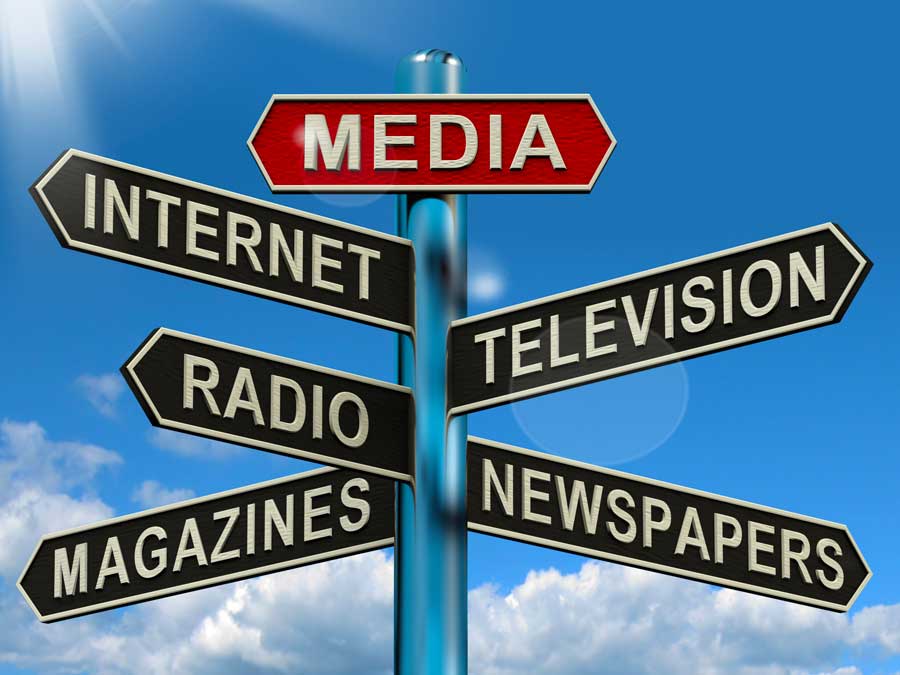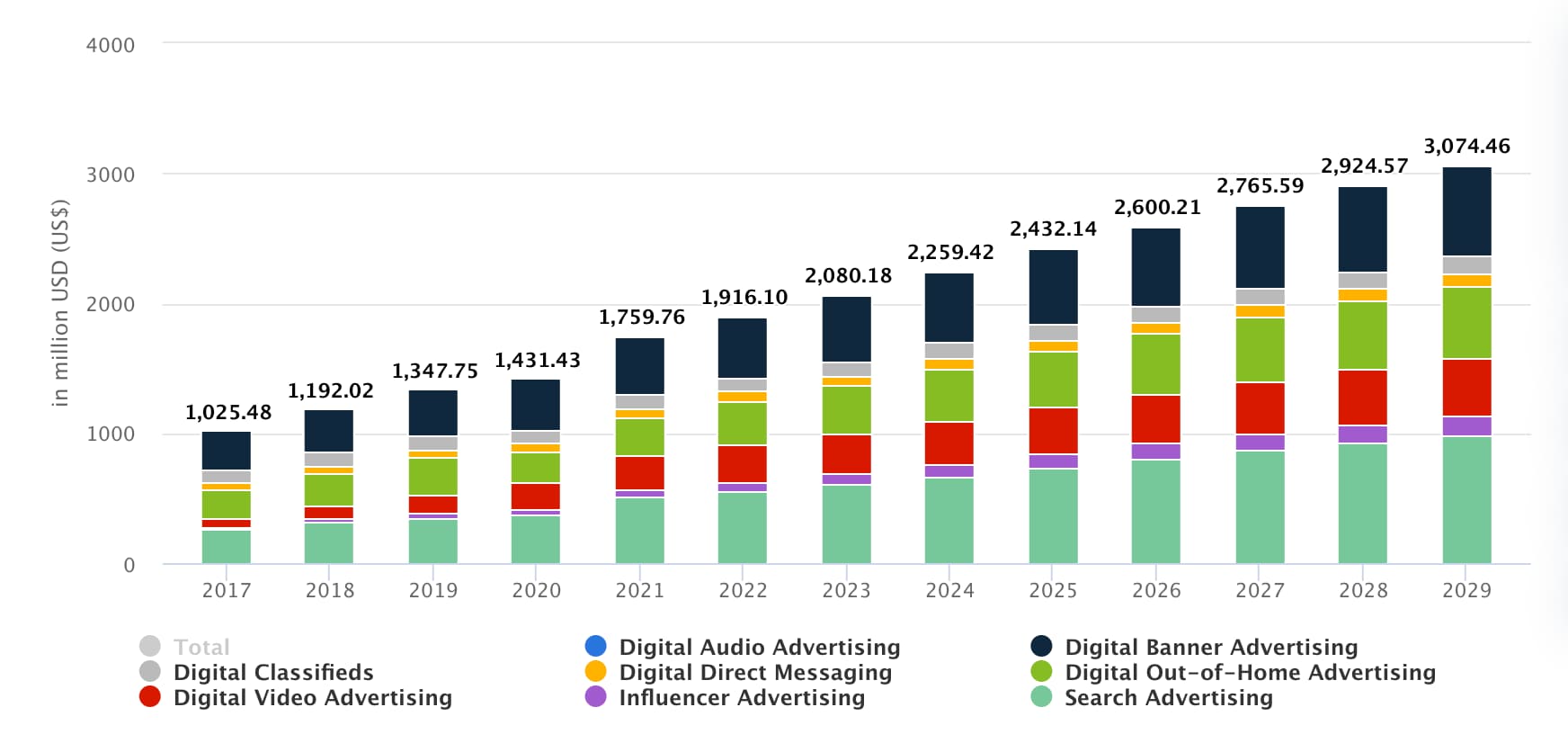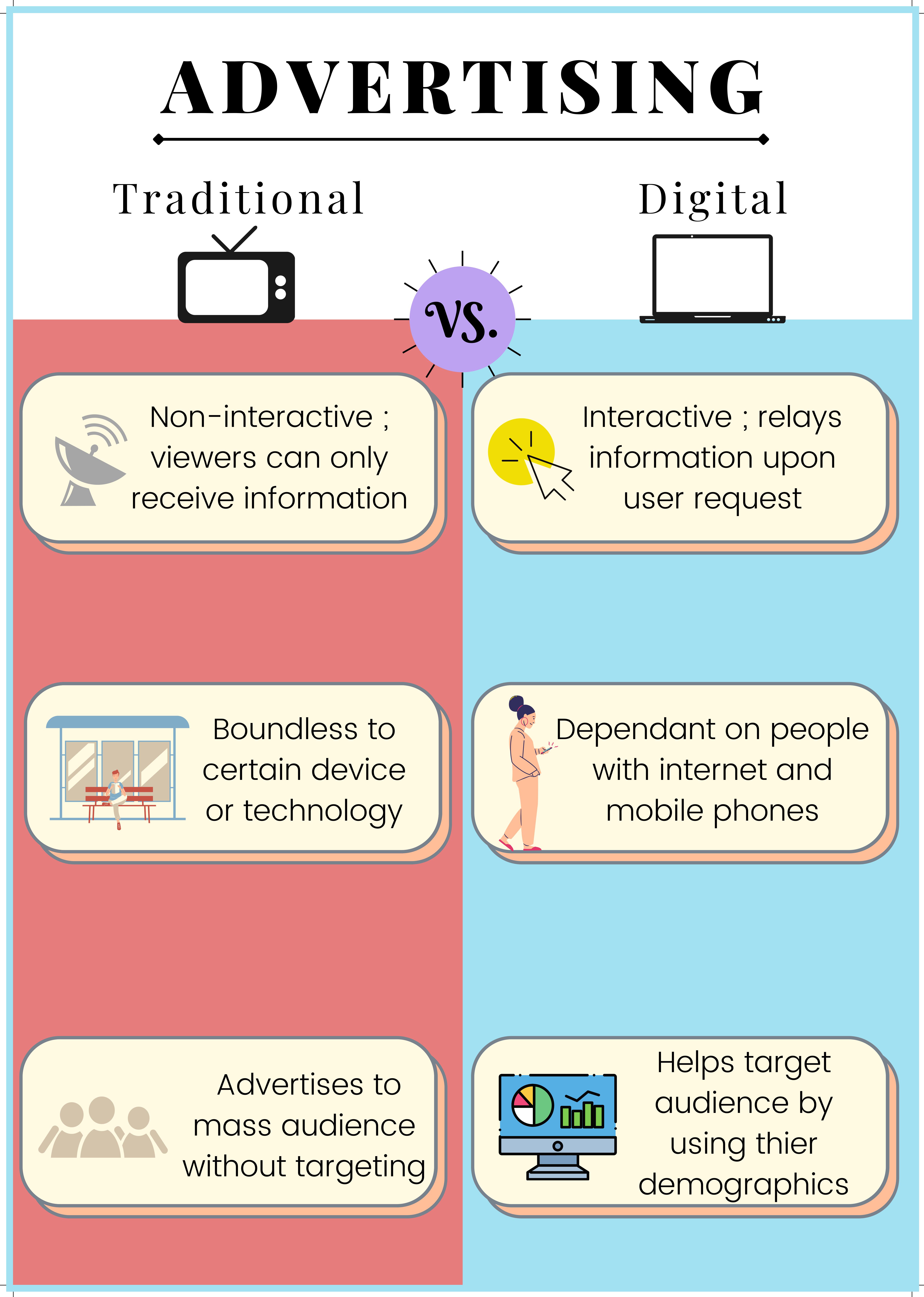Traditional Advertising vs Digital Advertising: A Comparison
Want to save time?
Summarize this article in seconds with AI
Since the rise of social media and a multitude of online tools, digital advertising has continued its impressive growth, outpacing traditional advertising in both reach and popularity. However, recent years have seen a renewed interest in traditional media advertisements, as businesses recognize the advantages of reaching audiences through physical and tangible channels, especially as digital ad saturation rises.
As we step into 2025, companies are balancing their marketing strategies more than before, blending digital and traditional tactics to capture consumer attention in increasingly diverse ways. While digital advertising remains the leader in terms of growth and adaptability, the resilience of traditional media advertisements lies in its ability to create tangible and lasting impressions, reach local audiences, and build brand trust in a physical context.
Quick jump to:
- What is Traditional Advertising?
- Advantages of Traditional Advertising
- Disadvantages of Traditional Advertising
- What is Digital Advertising?
- Advantages of Digital Advertising
- Disadvantages of Digital Advertising
- Differences Between Digital Advertising and Traditional Advertising
What is Traditional Advertising?

Traditional advertising is all types of advertising methods before digital advertising emerged, usually with a main objective of reaching a mass audience regardless of what demographic they belong to. Traditional advertisement has been in place since the dawn of time and still holds a place in Hong Kong. The distribution of conventional advertising is:
Advantages of Traditional Advertising

- High Visibility: Traditional advertising, like billboards and transit ads, are unavoidable for people on the go, ensuring high reach and exposure.
- Broad Reach: TV, radio, and press ads reach mass audiences, making them ideal for brand awareness and building credibility.
- Credibility and Trust: Established media like newspapers and TV are seen as trustworthy, which can boost brand reputation.
- Memorability: Physical ads and visuals often leave a lasting impression, enhancing brand recall.
- Less Ad Saturation: Traditional media channels face less clutter compared to digital, helping brands stand out.
- Local Targeting: Traditional advertisements are effective for reaching local audiences, particularly in specific geographic areas.
Disadvantages of Traditional Advertising
- Higher Costs: Traditional advertising spaces (TV, billboards, print) often come with a high price tag, especially when aiming for broad audience reach.
- Limited Targeting: Traditional media lacks the precise targeting capabilities of digital ads, making it harder to reach specific demographics.
- Less Flexibility: Adjusting or optimizing traditional advertising campaigns mid-run is difficult and costly, as traditional ads are often set in place once published.
- Limited Performance Tracking: Measuring the direct impact and ROI of traditional ads is challenging compared to digital, where performance metrics are easily accessible.
What is Digital Advertising?
As the emerge of the digital age, most people will have seen at least a digital ad or two. Digital advertisements are categorized by their use of online platforms or other technological tools to promote your brand or service. According to Statista, more than US$2 billion has been spent on digital advertising alone in Hong Kong in 2024.

Advantages of Digital Advertising
- Interactivity: Audiences can click, share, and engage directly with digital ads, often leading to instant conversions or deeper brand exploration.
- Precise Targeting: Digital platforms offer advanced targeting options, allowing advertisers to reach specific demographics, interests, and behaviours.
- Real-Time Tracking: Digital ads provide immediate performance data, enabling advertisers to monitor metrics like clicks, views, and conversions.
- Flexible Budgeting: Digital advertising allows for a range of budgets, from small daily spending to larger campaigns, making it accessible for all business sizes.
- Easy Optimization: Advertisers can quickly adjust or pause campaigns in real time based on performance, maximizing results.
- Wide Reach with Customization: Digital advertising can reach global or local audiences with personalized messages, increasing relevance and engagement.
Disadvantages of Digital Advertising
- Complex Buying Process: With numerous platforms and ad formats, setting up campaigns requires careful planning and research to allocate budgets effectively.
- Real-Time Bidding Competition: Ad spaces on certain platforms are auctioned, meaning higher costs as competitors bid for the same audience.
- Ad Fatigue: Users are often exposed to a high volume of digital ads, which can lead to reduced engagement and increased ad-blocking.
- Privacy Concerns: Increasing regulations and privacy tools make it harder to track users, affecting targeting precision.
- Potential for Click Fraud: Digital ads are vulnerable to bot clicks, which can inflate costs without real audience engagement.
- Constant Platform Changes: Frequent updates and algorithm changes on platforms require advertisers to stay updated to maintain performance.
Differences Between Digital Advertising and Traditional Advertising
Traditional Advertising vs Digital Advertising:

Digital advertisements are interactive and could relay more information upon the user’s request since they are interconnected to the internet and can easily transfer users to a landing page. Whereas traditional advertising cannot be interacted with as the audiences are only on the receiving end of the ads. If viewers would like more information about your product or brand, they would have to obtain more information themselves and some would find it too tedious.
Furthermore, digital advertising is dependent on people’s mobile devices or computers. Advertising would not reach people without an internet connection or electronic devices when traditional media advertisements are boundless to certain devices or technology. There are different types of traditional advertising, each utilising a different medium to advertise to its audience.
Traditional advertising does not target very specific groups of audiences, instead aims at advertising to as many people as possible so the ads may not always be shown to interested parties. Yet, digital ads place emphasis on precise audience targeting, making this method of advertising often more effective.
 Cookie preferences
Cookie preferences








 Xiaohongshu Advertising Guide: How Can Hong Kong Brands Maximize Their Results?
Xiaohongshu Advertising Guide: How Can Hong Kong Brands Maximize Their Results?
 2x your advertising effectiveness: Master big data to optimize ad ROI
2x your advertising effectiveness: Master big data to optimize ad ROI
 Top 5 Best Ads in 2025 in Hong Kong
Top 5 Best Ads in 2025 in Hong Kong
 Hong Kong Outdoor Advertising Cost in 2026 | Adintime Report
Hong Kong Outdoor Advertising Cost in 2026 | Adintime Report
 Marketing Calendar 2026: Key Dates For Marketing Success
Marketing Calendar 2026: Key Dates For Marketing Success
 The Most Widely-Read Magazine and Newspaper in Hong Kong
The Most Widely-Read Magazine and Newspaper in Hong Kong
 Understanding YouTube Advertising Costs in 2025
Understanding YouTube Advertising Costs in 2025
 OOH /DOOH advertising in Hong Kong: Formats and Rates (2025 Update)
OOH /DOOH advertising in Hong Kong: Formats and Rates (2025 Update)
 How much does LinkedIn Advertising Cost? (2025 Update)
How much does LinkedIn Advertising Cost? (2025 Update)
 Press Ad Basics: Types, Formats and Ad Price
Press Ad Basics: Types, Formats and Ad Price